
views
Remembering and Reading Your Dreams

Try to recall your dreams. The first step to predicting the future through dreams to is to remember them. Prophetic dreams, also called “precognitive dreams,” do not occur much, if at all, so you will have to be vigilant when it comes to remembering and reading your dreams. With effort, you can get better at holding onto the dreams, images, and symbols after waking. When you wake, hold the dream in your mind’s eye. This is when the dream is freshest and before your mind might unwittingly add to it. Try to recall the whole dream, include places, colors, emotions, and images. Each detail of the dream matters. Try to figure where you were, what you were doing, who else appeared in your dream, and what was the interaction between you and others. Focus on these images rather than a narrative. Dreams are often just a series of images and not connected in a coherent way, and our mind later orders them.
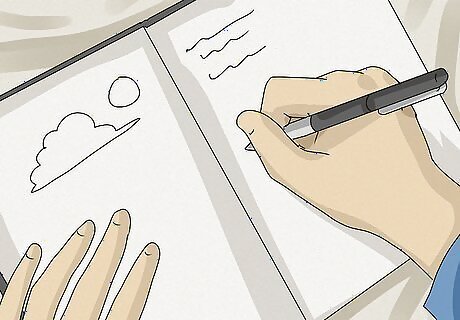
Keep a dream journal. Putting down the dream in writing will help you to reinforce it in your memory. Start a notebook dedicated to your dreams, using it to record images and sequence whenever possible, improving your recall. Place the dream journal near your bed. That way, you can grab it immediately after waking up and record what you experienced. Having your dreams in a notebook will also be useful when you start your analysis. You will be able to compare dreams with those in the past, contrast symbols, and also have a handy reference.

Pay attention to context. In reading dreams, you’ll need to focus on several factors. One of these is context and setting. Pay attention to where dreams occur, what it is like, and whether or not the setting is familiar to you. Did your dream occur somewhere that you have been before, for example? Or perhaps it was a strange location or even your mind’s invention? These details could point to meaning. Be aware of the dream’s time-frame. For example, while some dreams take place at an indeterminate time, others are vaguely in the future or have a clear date. Note any associations that you have with a dream’s context, as well. Were you at your late grandparents’ farm? Maybe you were at church. Write these details down, too.

Pay attention to dream figures. Note the people, animals, or other non-human beings that appear to you in dreams and consider your relationship to them. The figures who appear in our dreams can sometimes carry meaning or represent other parts of our psyche, that is, parts of the mind that might want to give you a message. Record who these figures are and what they do in your dream, making sure to analyze how they interact with you. Be as specific as possible. People in your dreams may not represent anything out of the ordinary. For instance, if you dream about an ex-boyfriend, he might simply represent your ex-boyfriend. Sometimes, however, figures appear in dreams that carry messages. Figures with whom you have a less direct personal relationship can especially be these harbingers of news – or even of the future.

Pay attention to emotions. Dreams often have an emotional overtone or feeling to them, recording and analyzing which may give you insight into its possible meaning for the future. Focus on how you felt during the dream. When you take down your impressions for each dream, pause on the emotions and try to puzzle them out. Did you feel anxious – why? Did you feel fearful or hopeful? Again, why?
Learning About Dream Symbols

Learn more about dreams and their general meaning. If you want to predict the future through your dreams, you’ll need to inform yourself about dreams as such and their meaning. For one thing, your daily life and emotions have a lot do to with what you dream. They can contain fragments of our activities and thoughts as well as anxieties, hopes, and fears. If you dream about flying or coming to class naked, for example, you are probably dreaming about suppressed fears rather than the future. You might try reading up on dream symbology to help in your self-analysis. The idea that dreams reflect the subconscious and can “symbolize” things in our minds was pioneered by psychologists like Sigmund Freud and Carl Jung, for example. Pick up a copy of Freud’s “The Interpretation of Dreams,” if you feel up to it. Carl Jung even thought that some images in dreams access a “collective unconscious” that cuts across all places and times. You’ll need to bone up on these ideas if you want to identify precognitive dreams.
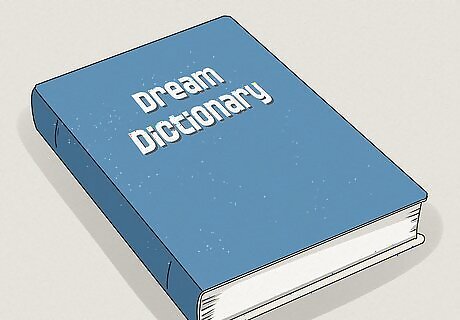
Consult dream dictionaries. Some people have extended the work of thinkers like Freud and Jung and put together “dictionaries” of dream symbols. You can find these on the internet, with a lot of detail for symbols like water, doors, fences, dogs, cats, and other things. To use one of these resources, go back to your dream journal, find important images, and then search for them. Try to be exhaustive and specific for, as you will see, the dictionaries often give very specific meanings. The idea behind a dream dictionary is that images or symbols have definite meanings, which you can then plug into your dream. For example, you may encounter future trouble with your sexuality if you had a foreboding dream about a mongoose. If you dream that you are trapped inside of a coffin with a mongoose, the dream might mean two things: you will have trouble with your sexuality, and that it is a situation you should address.

Try to tell precognitive dreams from others. Once you have a good record of your dreams, more knowledge about dream theories, and access to dictionaries of symbols, try hard to parse your dreams. Put together all of your resources – are there hidden messages in some? By categorizing the things that you dream about the most, as well as people, figures, and places, you should start to have a fairly detailed map of your dreams. Slowly start to work through your dream journal to see the possible meaning of symbols. Write these symbols down or keep charts, if it helps you to stay organized. Ask yourself: do any elements of your dreams have a possible reading for future events? Some precognitive dreams might be easier to spot than others. For example, you may be aware during a dream that you are receiving a prophecy. Alternately, you may meet with a courier – this is a straightforward symbol that you are getting a message.
Facing the Limits of Dream Predictions
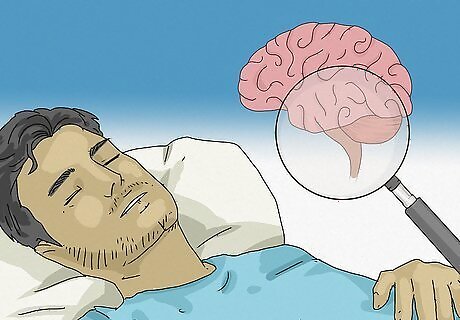
Recognize the limits of dream science. Dreams are highly personal and, in fact, scientists still don’t quite know why we dream. If you are seriously interested in dream interpretation, you’ll be happy to know that they may well have some meaning for your life. However, you probably won’t be able to use them to predict the future. Some scientists think that dreams are a result of the brain firing at random. Some think that animals, humans included, evolved dreaming as a defense mechanism, while others believe that we dream in order to process information at the end of the day. Still, other people strongly believe that dreams can be something more. Perhaps they aren’t precognitive, but is it possible that a dream could be a message from someone or something? We really don’t know.
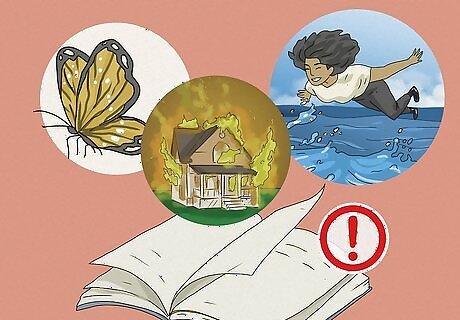
Recognize the limits of dream interpretation. Analyzing your dreams may well help you to better understand yourself and your subconscious. You may find fears, hopes, and aspirations that you weren’t aware of before. However, whether you can take a specific lesson from a dream is not so clear. Dreams and symbols will vary from person to person. While some might be universal, as Jung thought, many more probably aren’t. Given how unproven dream interpretation is, you should be careful about using it to guide your life or as the basis for major decisions. Interpreting the future often reveals the best path forward, but it may not reflect direct reality.
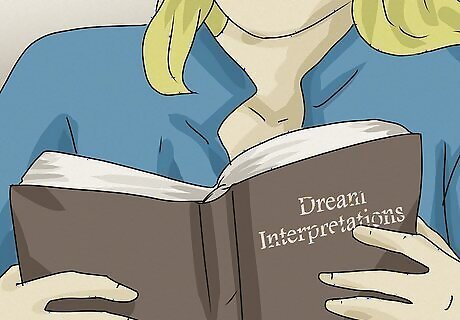
Be wary of “one-size fits all” interpretations. Many dream resources pretend to have all the answers. They will assign detailed, specific meanings for all sorts of symbols. Does dream interpretation really work like this? In fact, it is probably a lot more complex. Don’t trust everything that you read. You know yourself best, and many times can identify the meaning or association of a symbol better than a dream dictionary. Trust your own judgement. If you want to get to the meaning behind your dreams, you might also try seeing a psychoanalyst. She might not be able to tell your future, but perhaps she can shine some light onto your subconscious.




















Comments
0 comment